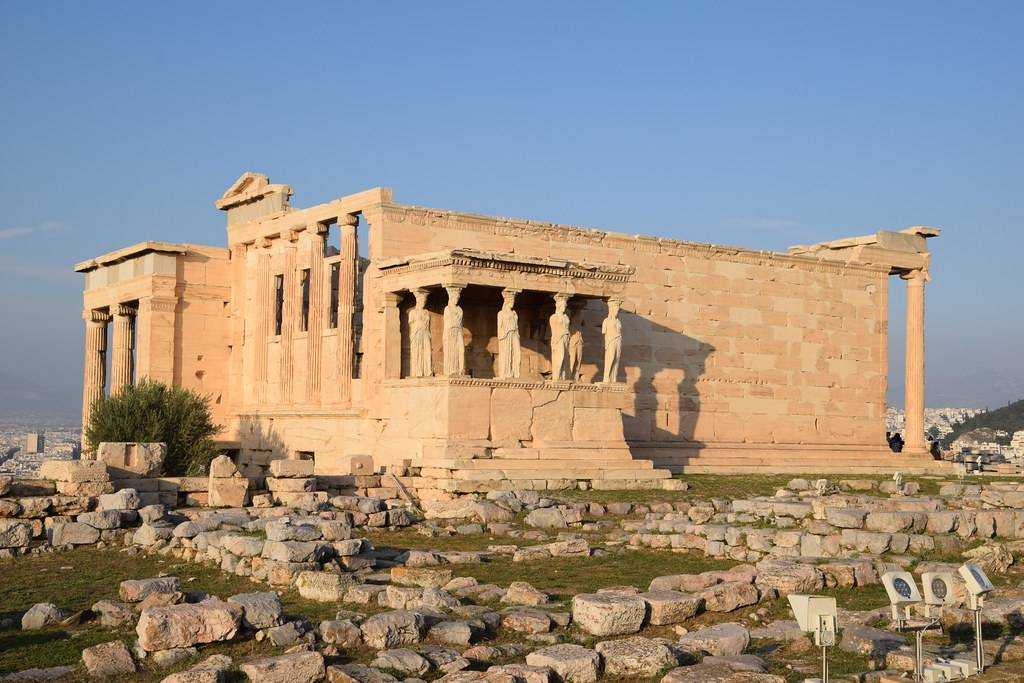The Erechtheion, a marvel of ancient Greek architecture, is a captivating historical site located on the north side of the Acropolis in Athens, Greece. This iconic structure, with its intricate design and rich mythology, has been a beacon of fascination for historians, archaeologists, and tourists alike. Its unique architectural style and the famous Porch of the Maidens make it an unmissable landmark in the heart of Athens.
Get your dose of History via Email
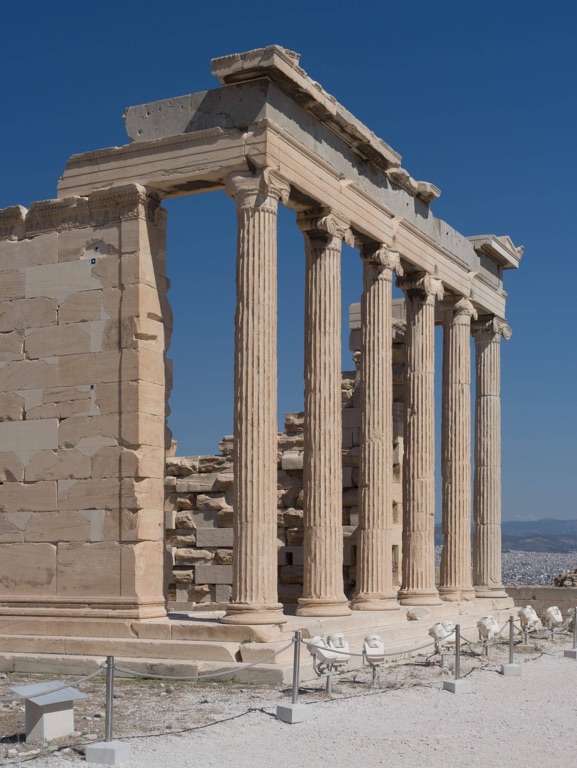
Historical Background
The Erechtheion was built between 421 and 406 BC during the Classical period, a time of great cultural and intellectual growth in Greece. It was constructed during the Peace of Nikias, a truce between Athens and Sparta during the Peloponnesian War. The temple was dedicated to Athena Polias and Poseidon Erechtheus, reflecting the religious beliefs of the ancient Athenians. The name ‘Erechtheion’ originates from Erechtheus, a mythical king of Athens who was said to be a local hero, a mortal, or an incarnation of Poseidon.
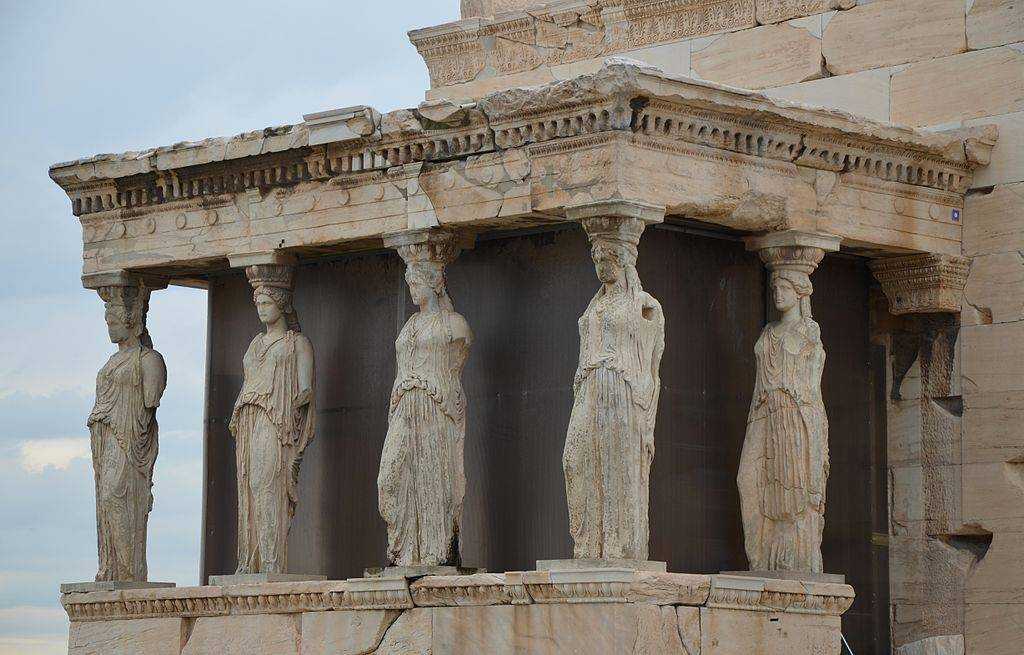
Architectural Highlights
The Erechtheion is renowned for its complex and elegant architecture. It was built entirely of Pentelic marble, a material known for its pure white appearance and fine grain, quarried from Mount Pentelicus near Athens. The temple measures approximately 22.2 meters in length, 11.5 meters in width, and 7.5 meters in height. The most distinctive feature of the Erechtheion is the Porch of the Maidens or Caryatids, with six draped female figures serving as supporting columns. Each Caryatid is sculpted in a manner that displays a beautiful blend of rigidity, necessary to support the weight of the porch, and relaxed naturalism.
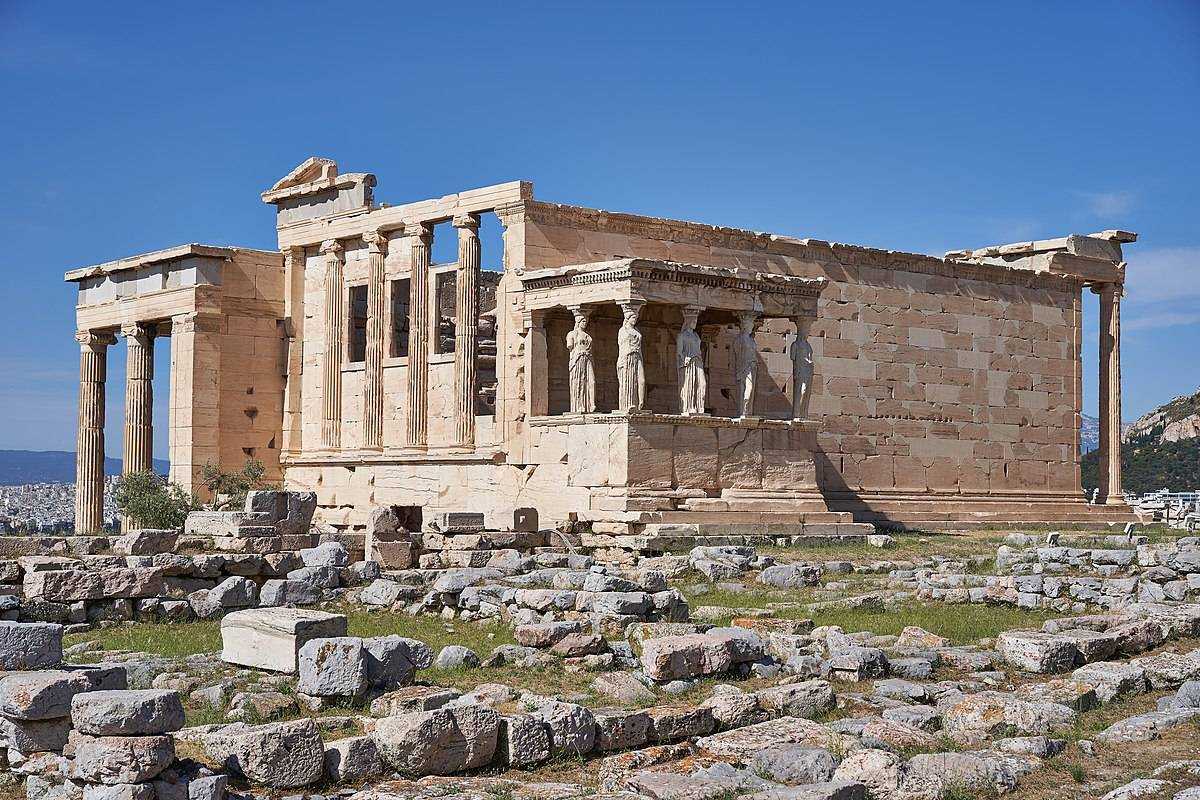
Theories and Interpretations
The Erechtheion is a subject of various interpretations and theories due to its unique design and multiple functions. It was not just a temple, but also a sanctuary that housed ancient wooden cult statues of Athena and Poseidon. The building is divided into sections, each dedicated to different gods and heroes, reflecting the complex religious practices of ancient Athens. The Caryatids, for instance, are believed to represent the priestesses of Artemis at Brauron, carrying the sacred peplos of the goddess on their heads. The dating of the Erechtheion has been established through historical records and stylistic analysis of its architecture.
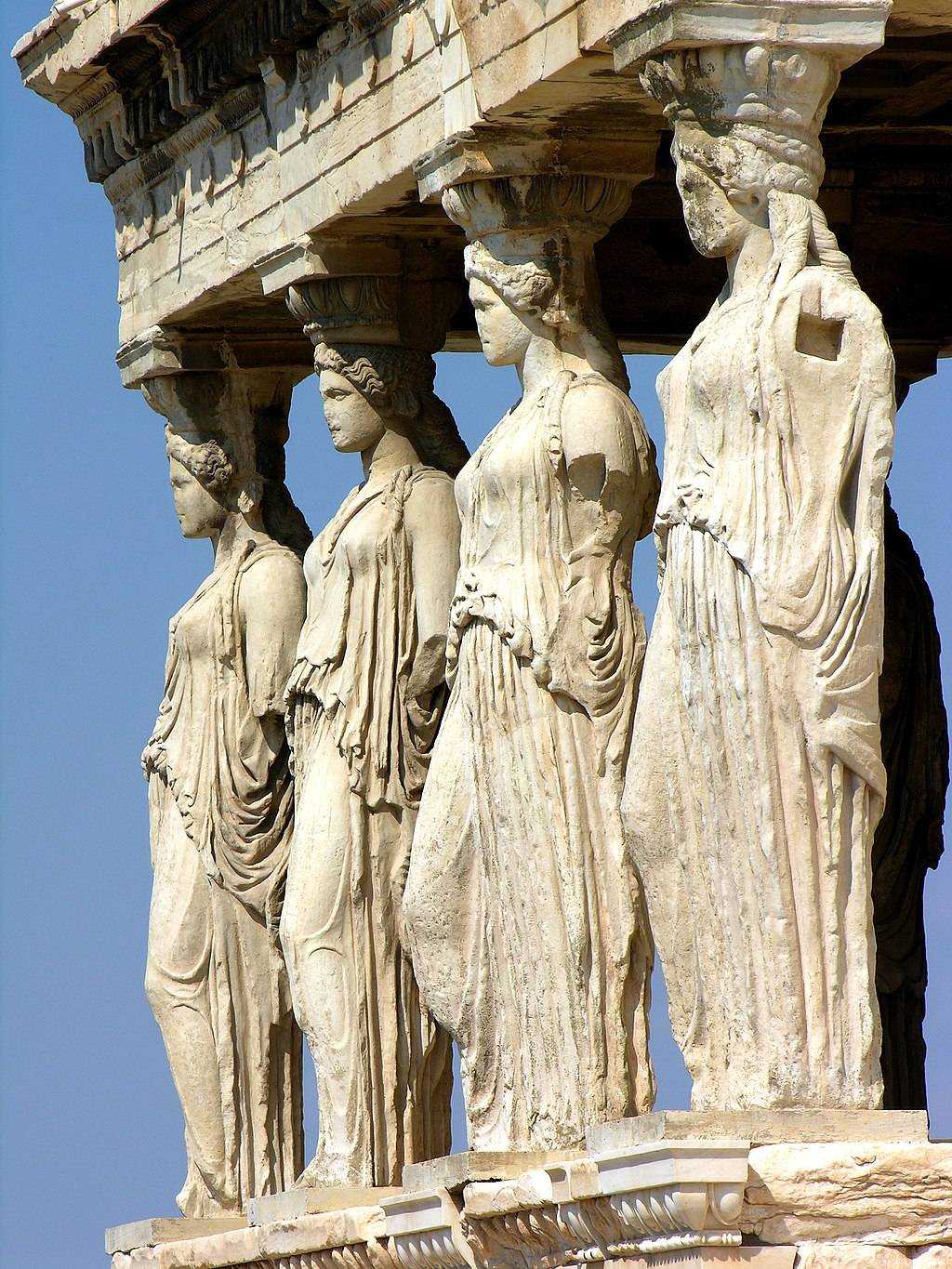
Good to Know/Additional Information
One intriguing aspect of the Erechtheion is the presence of an olive tree near the western facade. According to mythology, Athena and Poseidon competed for the patronage of Athens, and Athena won by producing an olive tree, a symbol of peace and prosperity. The olive tree at the Erechtheion is believed to be a direct descendant of that original tree. Today, the original Caryatids have been moved to the Acropolis Museum to protect them from pollution and weathering, and replicas have been placed in their stead. The Erechtheion, despite the ravages of time, continues to stand as a testament to the architectural prowess and rich cultural heritage of ancient Greece.
